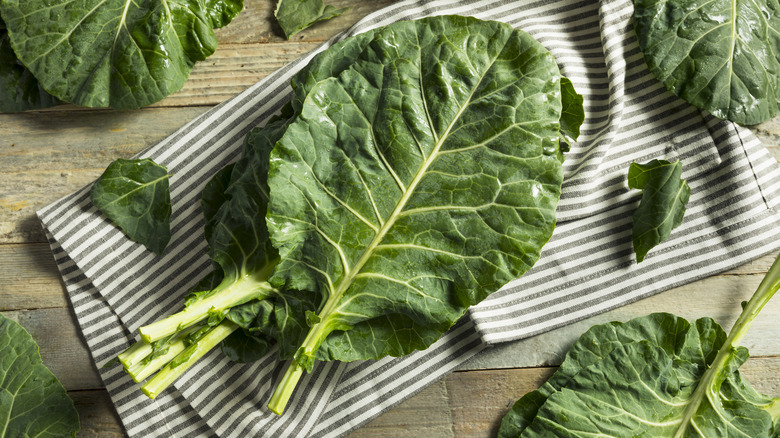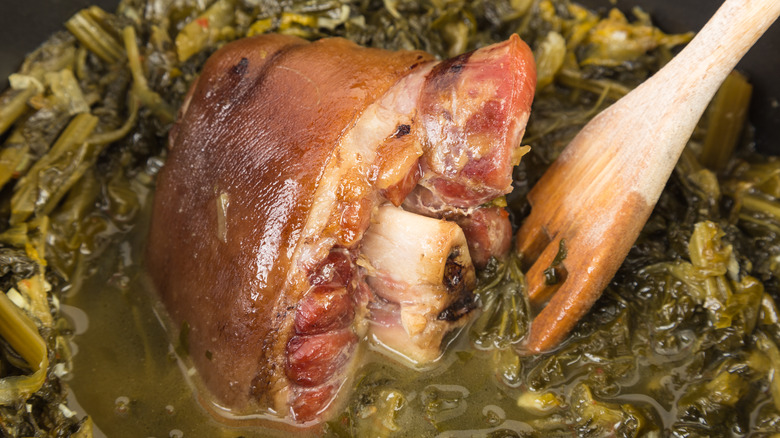Cook Collard Greens Southern-Style For The Ultimate Flavor Boost
Nothing hits the spot quite like soul food — especially when it's homemade. With its rich and comforting flavors, even the sides contribute to that backyard cookout feel. One of those staple sides is, of course, collard greens — a dark and leafy cabbage that cooks down nicely without losing its bold flavor. But if you want to fix the sometimes overly bitter taste in collard greens and add an extra flavor boost, it's time to try cooking them Southern-style.
The secret ingredient you'll need is some form of rendered fat — bacon bits or ham hock are traditional options. By starting with the meat and allowing its fat to render, then adding aromatics like onions and garlic along with some water, before finally incorporating the collard greens, you help break down the cabbage's tough fibers while infusing it with umami. You can even swap the water for stock or beer for more depth of flavor.
It's important to acknowledge how this style of cooking collard greens originated in African American cuisine during times of slavery. Enslaved people were often given what were considered scraps, such as collard greens and ham hocks. Through incredible resilience and resourcefulness, they transformed these humble ingredients into an iconic and flavorful dish. Now, we can enjoy a delicious upgrade to a typically bitter green simply by being resourceful with what's in our kitchen. After all, when is adding bacon to a meal a bad thing?
More tips for cooking collard greens
The best way to clean collard greens is by giving them a proper rinse with water, but be sure to pat them dry before cutting. Collard greens are almost never served as whole leaves, so make sure to slice away the stems and chop them into ribbons or squares before adding them to your pot with rendered fat. Much like other leafy greens, they will cook down significantly as they soften, but you'll need a large pot to fit them in before they shrink — so plan accordingly.
When it comes to prepping the other ingredients, it's always best to start with your fat base. In this case, we're not looking for lean meat, so leave as much fat on your bacon or ham hock as possible — you can also use a turkey leg if your diet doesn't include pork. Start with a room-temperature pot so the fat can slowly render as the whole thing heats up, before adding your aromatics to bring in more of that earthy undertone. The whole dish is best cooked low and slow when covered, so be sure to leave that lid on and let the collard greens simmer for maximum flavor absorption. In the end, the patience is worth it — especially when you take that first tender bite of this Southern classic.


